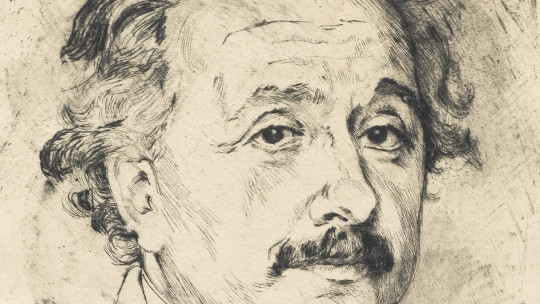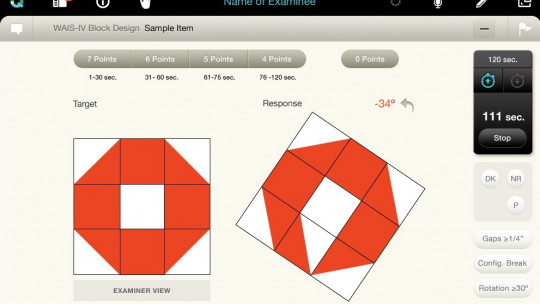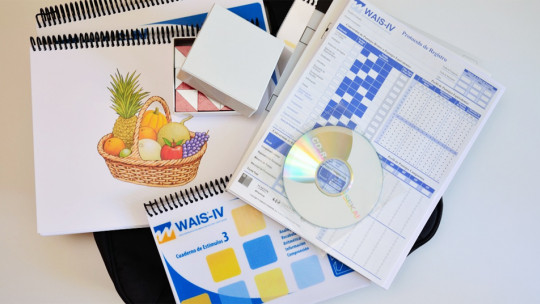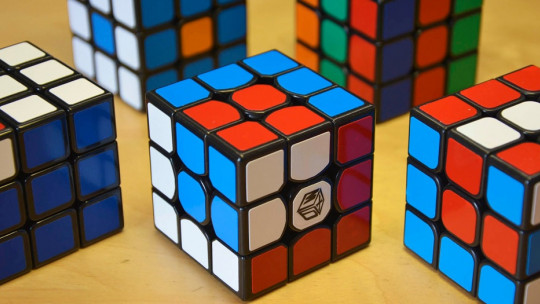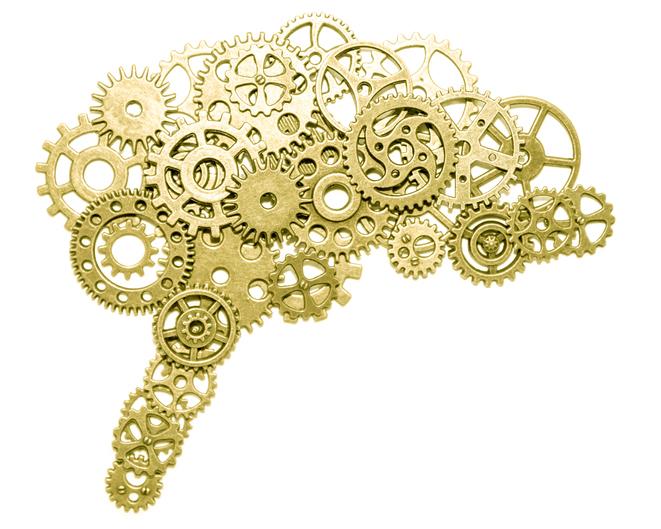
The term “intelligence” has multiple definitions, since it can give rise to various conceptions depending on the vision that each scholar has had of it, which is why it is not an easy task to measure it.
Among the ways of defining intelligence we can highlight the following: logical, reasoning, understanding processing, learning, creativity, emotional, problem-solving, among others.
For the evaluation of intelligence, numerous different tests have been developed, based on the author’s conception of this concept, in order to evaluate various aptitudes, knowledge or functions, through different psychometric tests, generally called “intelligence tests.” ”.
In this article We will talk about the intelligence evaluation process and the most used tests in this context.
How can an evaluation of a person’s intelligence be carried out?
To evaluate the intelligence of human beings there is no univocal method but multiple types of tests have been developed for this purpose, among which several of which we will discuss in this article stand out.
The tests that have been developed with the objective of evaluating intelligence allow measuring more global aspects (for example, verbal comprehension), so that thanks to this type of tools, psychologists can evaluate and know the potential that a person has for intelligence. learning or other capabilities.
Classification of intelligence assessment instruments
The most common classification of intelligence assessment tests is that which divides them into two large groups: intelligence assessment tests based on rational methodology and those based on the factorial method, as we will see below.
1. Intelligence evaluation test based on rational methodology (from a clinical approach)
It is a set of tests for the evaluation of intelligence that have been developed based on the theory of the author who has developed each of the tests that are based on a rational methodology. It should be noted that this type of test is applied individually.
The main precursor of this type of tests has been Wechsler, who developed his tests based on Binet’s theory and whose tests are still valid today, being one of the most used in this field of psychology. For Wechsler, intelligence is nothing more than another component of personality, and it encompasses a set of aptitudes and abilities that people have to be able to adapt to the environment in which they live.
Furthermore, rational intelligence evaluation tests are usually made up of a set of very diverse tasks, so that they allow the evaluation of the various aptitudes and capacities of which human beings’ intelligence is made up.
2. Intelligence evaluation test based on factorial methodology
Within this group are those tests for the evaluation of intelligence that have been prepared based on factor analysis
Among the professionals who developed this type of tests to measure intelligence, Spearman stands out, who used factor analysis for the first time at the beginning of the 20th century in order to know the most important components of intelligence.
This type of tests They are usually applied collectively and are divided into two groups: on the one hand, the g factor tests, which carry out a single measurement (in relation to the g factor) in order to evaluate the intellectual level; On the other hand, there are aptitude tests, which are responsible for evaluating a series of specific skills that the person being evaluated has, without evaluating the latter’s general intelligence.
Factor analysis method tests conceive intelligence as a set of unconnected traits, and not a unitary trait.
Rational intelligence assessment tests
Rational tests are usually based on the theory of the author who developed each of the tests, so each one measures intelligence based on the conception that its author has of it. Next, we will briefly explain some of the most used rational tests for evaluating intelligence.
1. Stanford-Binet Intelligence Assessment Scales
This scale, existing since its first version at the beginning of the 20th century, has evolved into several versions, with the 4th and 5th being the most updated.
The 4th version of Stanford-Binet is made up of 15 tests to evaluate intelligence, divided into 4 areas: short-term memory and abstract-visual, verbal and numerical-quantitative areas. This is a test for people from 2 to 23 years of age and is based on an evaluation based on a hierarchical model at three levels: the G Factor, verbal, quantitative and abstract reasoning and crystallized, fluid-analytical and memory abilities. short term.
The 5th version was developed in order to be able to apply this test to evaluate the intelligence of people up to 85 years of age, with the other components being similar to those of the previous version.
2. Wechsler Intelligence Assessment Scales
These types of tests are probably the most used in this field. There are several versions depending on the age group you want to evaluate:
The WPPSI-IV is made up of 5 types of tests: fissure key, cancellation, animal search, location and recognition.
The WISC-V is composed of a total scale that measures verbal and visual-spatial comprehension, fluid reasoning, working memory and processing speed ; primary scales, which measure the same components of intelligence as the total scale; finally, the secondary scales, which measure quantitative reasoning, auditory working memory, non-verbal reasoning, general ability and cognitive competence.
The WAIS assesses general intellectual functioning, as well as four indices: perceptual reasoning, verbal comprehension, processing speed and working memory. This test is made up of 10 main tests and 5 optional tests, the latter being used in cases where it is necessary to expand the range of cognitive abilities evaluated, in order to obtain more information about the subject evaluated.
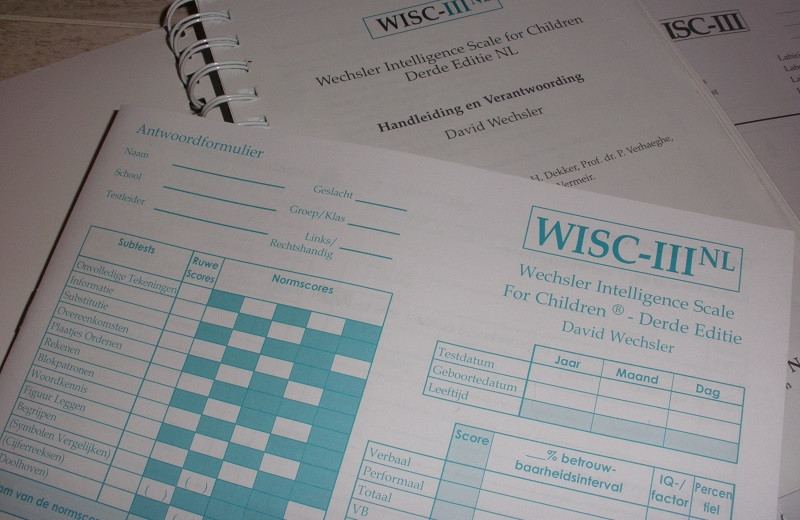
- Related article: “WAIS-IV Intelligence Test (Wechsler Adult Scale)”
3. Kaufman Intelligence Assessment Scales
Kaufman’s K-ABC test mainly focuses on the way of processing, so It is a very useful instrument to carry out evaluation tests for children who have some difficulty in learning or communication These tests can be applied with children from 2 years and 6 months to 12 years and 5 months of age and are composed of 4 scales and 16 subtests.
The K-BIT test is aimed at an older age range (from 4 to 90 years old) and is a screening test and not a diagnostic test that evaluates both verbal and non-verbal intelligence. It is also made up of 2 subtests: vocabulary, to measure verbal intelligence, and matrices, to measure non-verbal intelligence.
- You may be interested: “Learning disorders: types, symptoms, causes and treatments”
Factorial tests for the evaluation of intelligence
Factor tests can be divided into two categories: non-verbal tests and verbal tests. Next, we will see some evidence that exemplifies both types of evidence.
1. Non-verbal intelligence evaluation test
The following tests stand out in this category.
1.1. The Progressive Matrices Test developed by Raven
This is one of the most used tests for evaluating intelligence, whose objective is to evaluate the general intelligence of the subjects, being designed to measure the G factor, which also explains 60% of the variance of the test and It is very useful to quickly measure the level of intellectual functioning
The items in this test are of two types: those of gestalt behavior, in which the subject must complete a drawing that is incomplete; and those of deduction of relations or analogical reasoning, in which the subject is presented with various alternatives and must choose the correct one.
- You may be interested: “Raven’s progressive matrices test”
1.2. The Cattell G Factor Test
The main characteristic of this intelligence evaluation test is that does not require any minimum level of studies or culture (there are 3 versions depending on age and/or cultural level) and which is responsible for the evaluation of the G factor of intelligence, explaining 90% of the variability of this test.
These tests contain 4 types of tests: classification, series, matrices and conditions, together providing a general score. They allow you to obtain centile scores and, as a result, the IQ (intelligence quotient) and mental age are calculated.
- Related article: “Raymond Cattell’s theory of intelligence”
2. Verbal intelligence evaluation test
In this category we find the following instruments.
2.1 IG-2
It is a test that is used to evaluate intelligence with people who have a low cultural level and measure general crystallized intelligence, so it evaluates verbal comprehension, numerical reasoning and abstraction abilities. The tests used in this test are the following: verbal comprehension and speed, reasoning and perceptual precision.
2.2 Simple Otis
This test is used with people who have a medium-low cultural level, in order to evaluate mental development and their abilities to adapt consistently with their thinking to new adversities. Questions from the common environment are used to carry out the evaluation.

